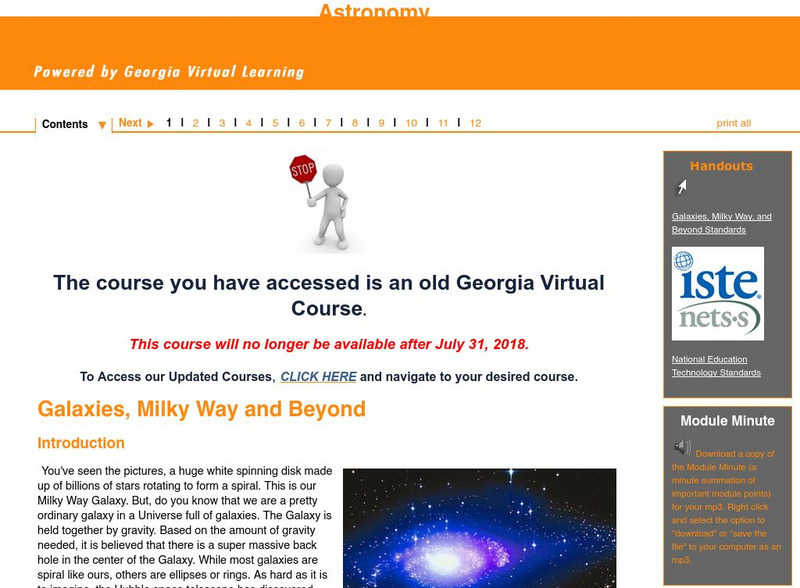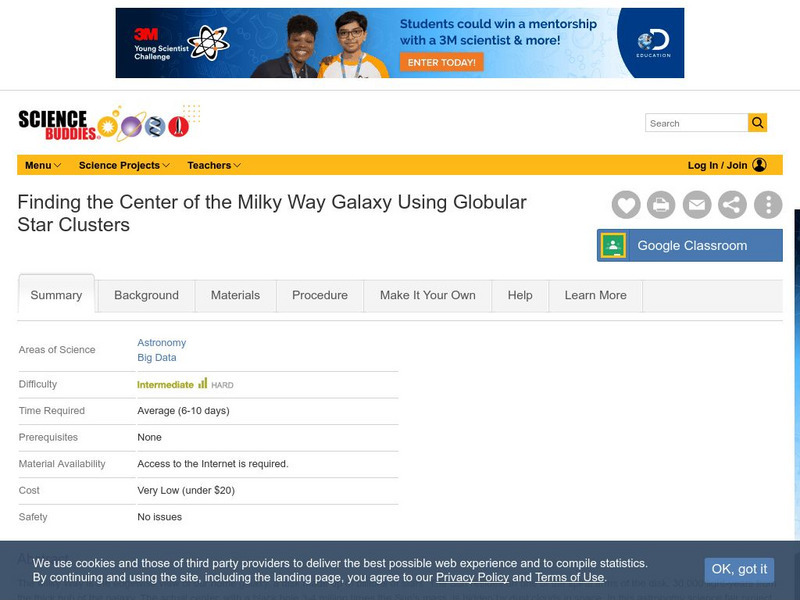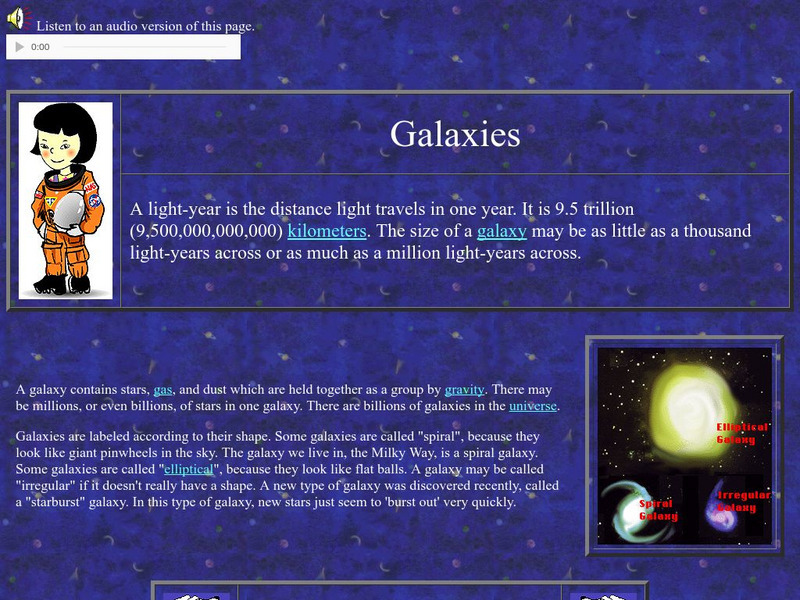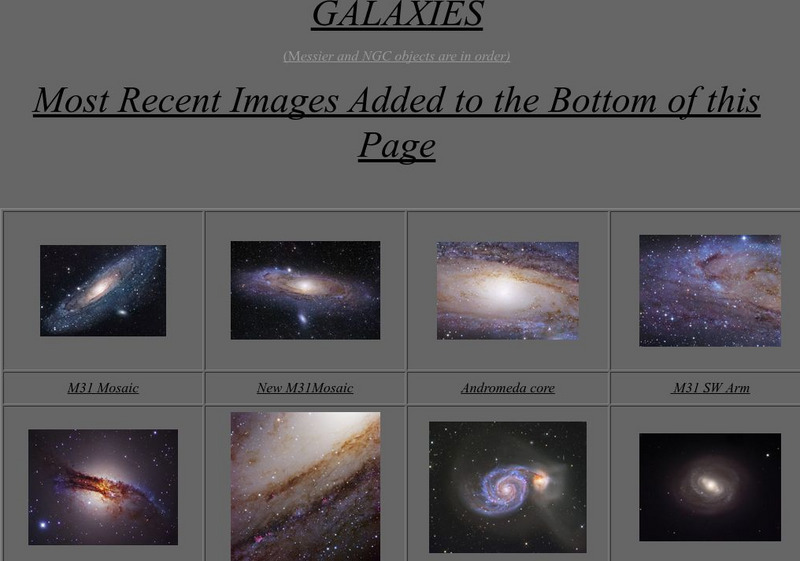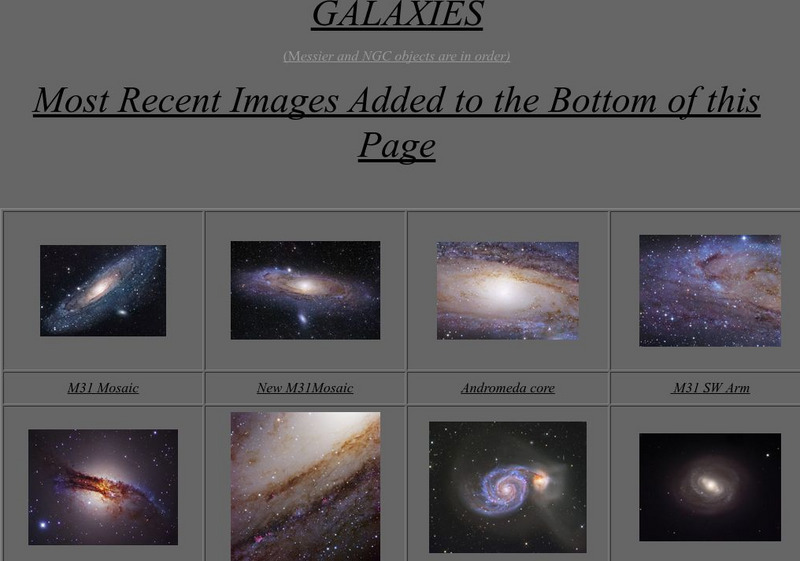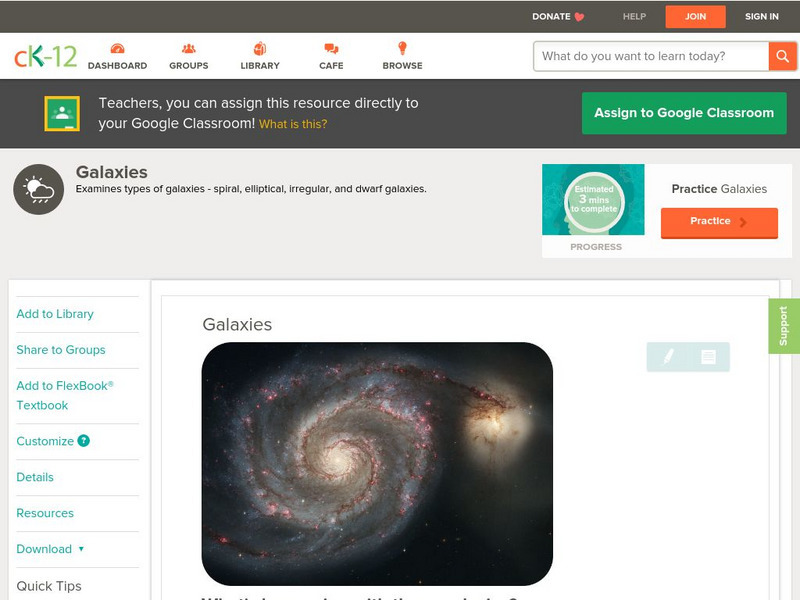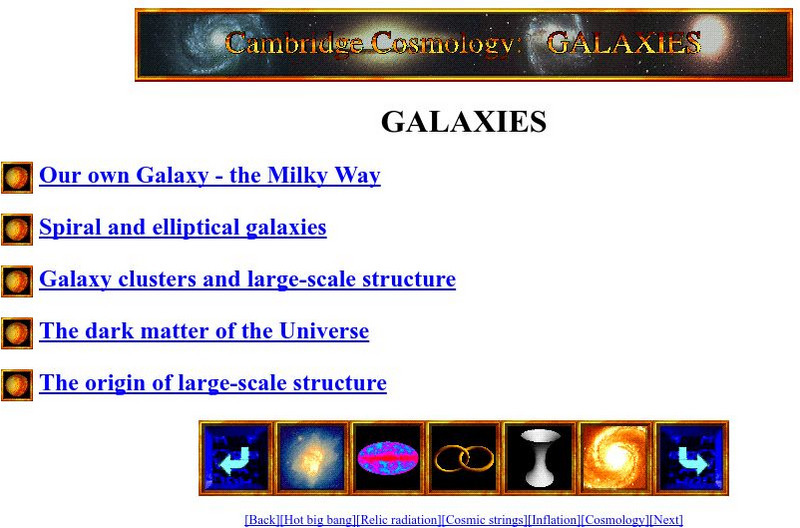Hi, what do you want to do?
American Museum of Natural History
The Milky Way Galaxy
Just how big is the galaxy? Learners read information about the size of the Milky Way galaxy to better comprehend its size. Pupils develop an understanding of the number of stars in the galaxy by finding just how big a billion is and...
Glynn County School System
Other Galaxies
The Milky Way belongs to a cluster of galaxies called the local group and it could be considered our neighborhood! Use the PowerPoint to present information on the different galaxy types, both local and farther away. Scholars learn how...
Star Date
Build Your Own Galaxy
Don't just look at pictures of the Milky Way galaxy, build it with this hands-on activity in which scientists recreate the galaxy we live in.
Curated OER
Galaxies
Tenth graders explore the structure and content of galaxies. Through discussion, lab, and hands-on activities, they discover the general structure of the three types of galaxies as well as the effect they have on the structure and...
Curated OER
Galaxies to Scale
In this scales and galaxies worksheet, students solve 7 problems including finding the size of galaxies in comparison to other galaxies and drawing scale models of the given galaxies to show their relative sizes and shapes.
Curated OER
Rotation Velocity of a Galaxy
In this orbit of stars in galaxies worksheet, students are given an equation that models the orbital speeds of stars as they relate to their distance from the nucleus of a galaxy. Students solve 5 problems using this equation and...
Curated OER
Exploring a Galaxy
In this galaxy worksheet, students use the Internet or other resources to answer 13 questions about the galaxy NGC-1232. They are given a photograph of the galaxy to help determine the width and diameter of certain regions of...
Curated OER
A Galaxy Up Close
In this Sombrero Galaxy learning exercise, students observe infrared images taken by the Spitzer Infrared Telescope and the Hubble Space Telescope. They answer 9 questions about the details of the images such as the radius of the stellar...
Curated OER
Cosmic Bar Graphs
In this cosmic bar graph worksheet, learners solve 2 problems using given bar graphs that plot the number of galaxies vs. the galaxy type and the number of gamma-ray bursts vs. the burst classification. Students find the fraction of...
Glynn County School System
Cosmology
The past, the present, and the future ... there's so much to discover about the galaxy. Scholars learn about the creation of the universe, its current structure, and how it is changing. The PowerPoint presentation begins with a...
Curated OER
Calculating Arc Lengths of Simple Functions-I
In this calculating arc lengths worksheet, students are given 4 simple functions and they use the Pythagorean Theorem and the basic techniques of calculus to find the arc-length formula in order to find the arc-length.
Other
University of Leicester: Spiral Galaxies
Provides a general overview of spiral galaxies, including descriptions of the different classes of spiral galaxy.
PBS
Pbs Nova Online: Spin a Spiral Galaxy
PBS site provides various views of spiral galaxies. (Quick Time required) With this technology, you can manipulate the image to spin it around and look at it from various angles.
Georgia Department of Education
Ga Virtual Learning: Galaxies, the Milky Way and Beyond
In this interactive tutorial students will explore galaxies. Learn what the Milky Way Galaxy is like, how various galaxies are grouped into clusters and superclusters and why those particular galaxies clump together.
Science Buddies
Science Buddies: Find Center of Milky Way Galaxy Using Globular Star Clusters
The Milky Way is the edgewise view of our home galaxy, a disk made up of billions of stars. The Sun resides on one of the spiral arms of the disk, 30,000 light-years from the thick hub of the galaxy. The actual center, with a black hole...
NASA
Nasa Star Child: Galaxies (Level 1)
This site provides an introduction to galaxies for the younger student, that is divided into 2 levels of understanding. Find out what type of galaxy looks like a giant pinwheel. Audio content included. Good glossary, and a printable...
NASA
Nasa Star Child: Galaxies
This resource has two levels: one for younger viewers and one for older viewers. It surveys the basic galaxy types and provides details.
Other
Astrophotography: Galaxies
Numerous high quality images of galaxies can be found in this site. Names, exposure times, and various magnifications are provided.
Other
Astrophotography: Galaxies
Numerous high quality images of galaxies can be found in this site. Names, exposure times, and various magnifications are provided.
CK-12 Foundation
Ck 12: Earth Science: Galaxies
[Free Registration/Login may be required to access all resource tools.] Examines galaxies and how they are divided into three types according to shape.
NASA
Nasa Space Place: What Is a Galaxy?
This resource explores the different types of galaxies through text and images.
Space Telescope Science Institute
Galaxy Hunter: A Cosmic Photo Safari
Travel the universe and learn about galaxies. Investigate Hubble Deep Field observations to learn more.
Other
University of Cambridge Cosmology: Galaxies
This site from the University of Cambridge allows you to view information on spiral, elliptical, and Milky Way galaxies, as well as galaxy clusters. Provides basic facts about each one.


















